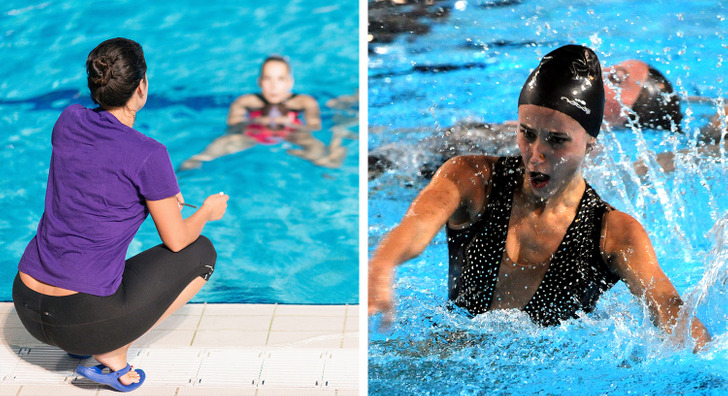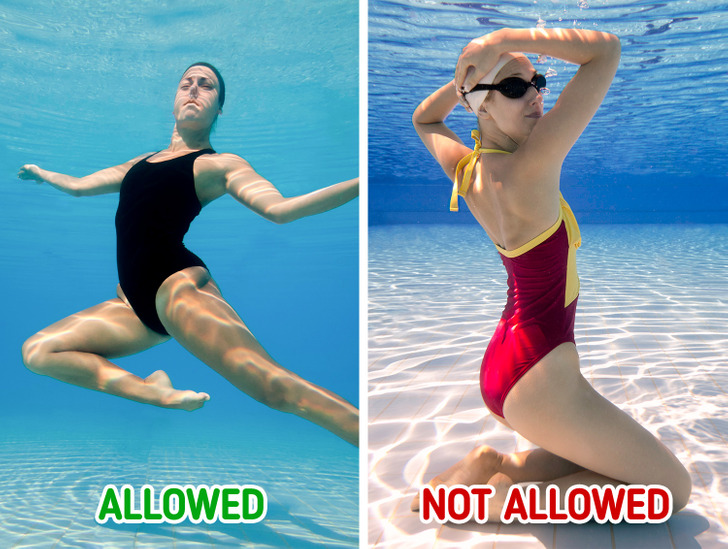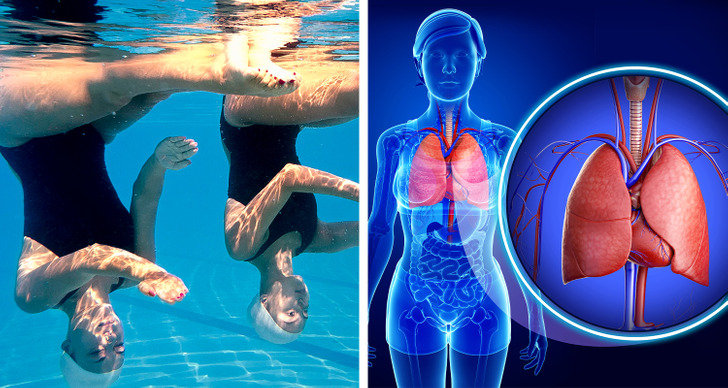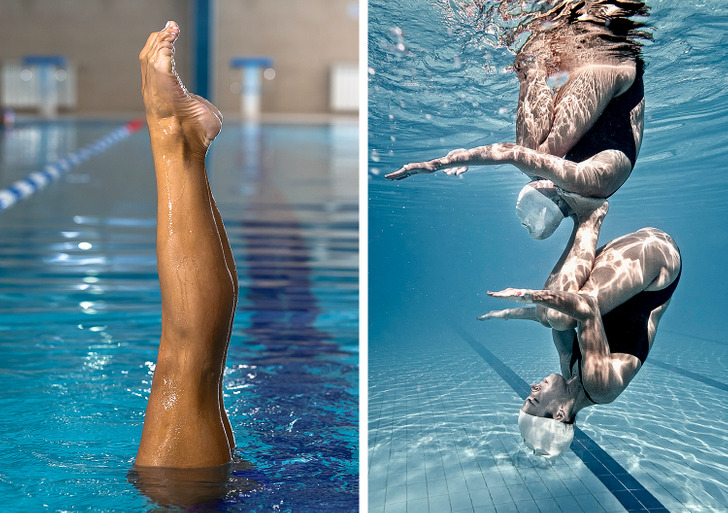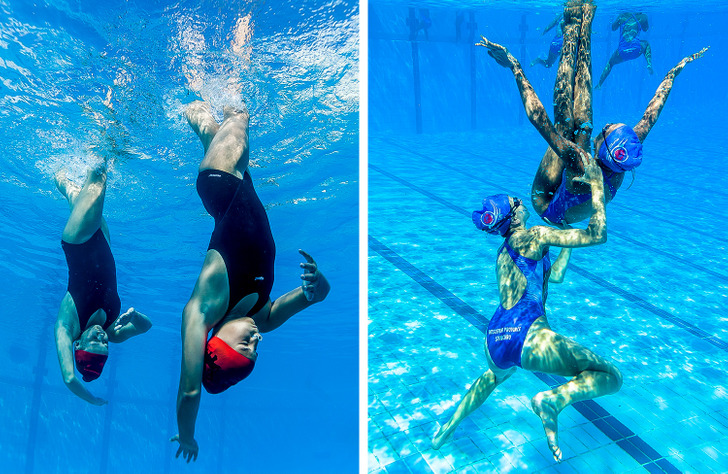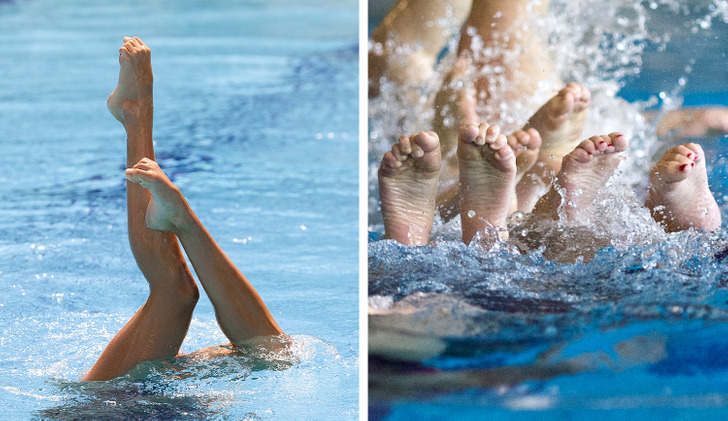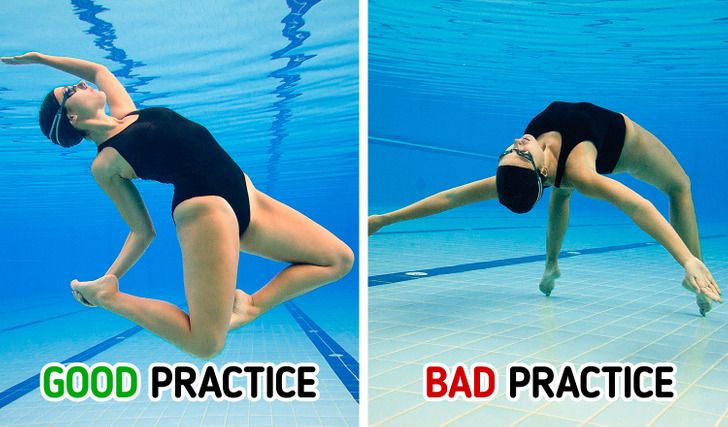13 Facts About Artistic Swimming That Prove There’s More to This Sport Than Simply Creating a Stunning Show
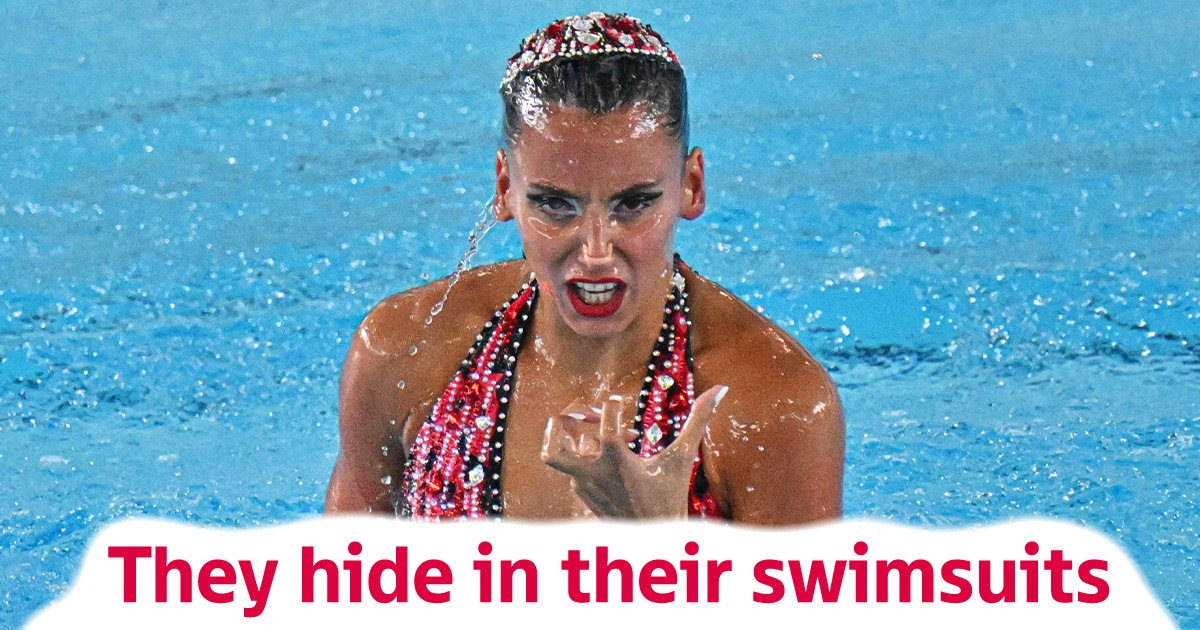
Water sports, especially synchronized swimming or artistic swimming, require strength, flexibility, and a lot of endurance. As spectators, we see in a few minutes the final result of a whole training program, and we tend to overlook the long days of practice and perfecting techniques behind the show. There’s no doubt that when these athletes get in the pool, they can swim and move like true mermaids.
1. Artistic swimming athletes use gelatine to hold hair in place while swimming.
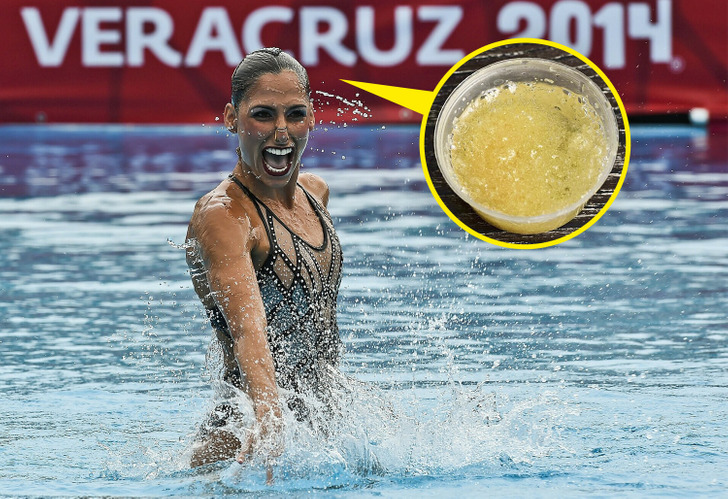
To keep their hair in place and well-groomed when swimming athletes use unflavored gelatine. They simply mix the product with water and apply it to their hair to style it and make it look neat just before competing. The only way to remove the gelatine is by rinsing their hair several times with hot water.
2. They have the best technology when it comes to underwater loudspeakers.
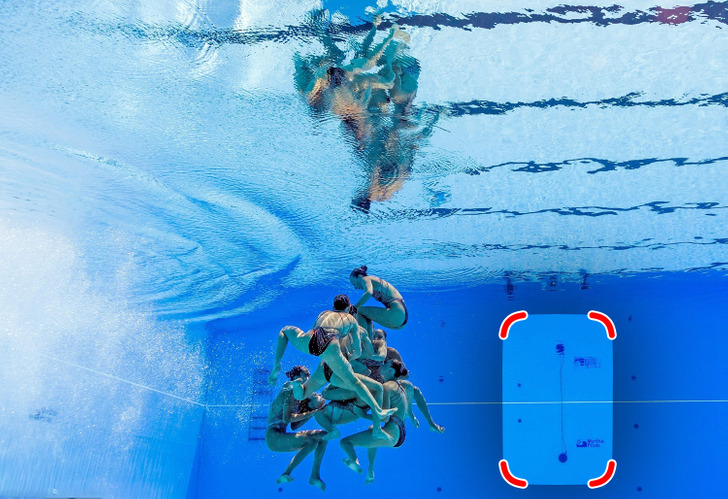
Music is key in synchronized swimming competitions, as athletes have to be in rhythm. In order for them to hear the music when they’re underwater, special high-tech loudspeakers are installed in the pools.
3. They train intensively for what’s in the end a 4-minute act.
Although the performances last only 2-4 minutes depending on the number of people participating, most of that time is spent inside the water. That’s why the synchronized swimming team practices ten hours a day, six times a week. They have to work on endurance, lung capacity, and the precision of their movements. This makes it one of the most demanding sports in terms of training.
4. They cannot wear aquatic goggles.
Artistic swimmers are not allowed to wear goggles, because it is important for the judges to see their facial expressions. The use of goggles would hinder the judges’ abilities to evaluate their faces while performing. The only thing they are allowed to wear are nose clips because they prevent water from entering their noses while they are underwater.
5. They are not allowed to wear theatrical makeup.
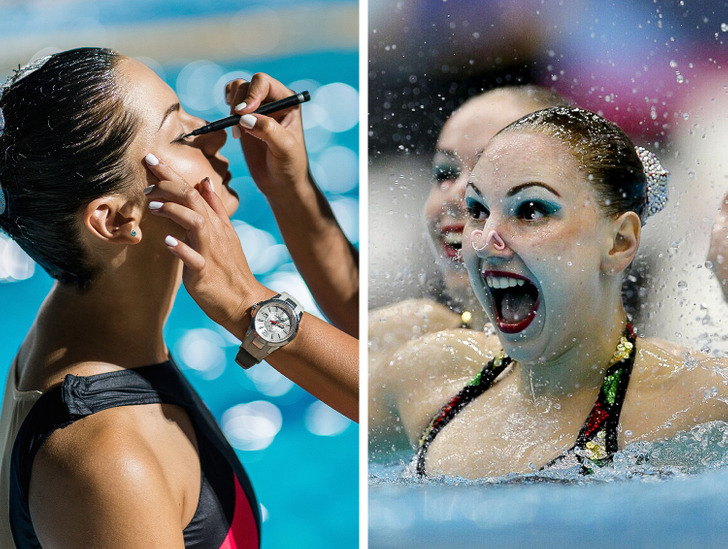
They put on professional waterproof makeup to accentuate their features. This way they make sure that the judges can see their expressions during the performance, as this is part of the points that are evaluated.
6. They train to increase their lung capacity.
Athletes spend many hours training underwater to build endurance so that their lung capacity increases. This helps the body make better use of oxygen by absorbing it more efficiently and so decreasing the likelihood of developing respiratory diseases such as asthma.
7. They wax or shave their bodies.
You’ve probably noticed that all swimmers are perfectly epilated. Many people think this is an aesthetic choice or imposition, but there’s actually technical reason supporting this decision. Hair increases resistance in water when the swimmer is moving. Also, a hairless body increases sensitivity.
8. They use almost every muscle in their body.
Swimming is one of the most intense sports and can be extremely demanding at both amateur and professional levels. During their training, athletes use almost every muscle of their body, making it one of the most health-enhancing activities in the world.
9. They use milk to treat red eyes.
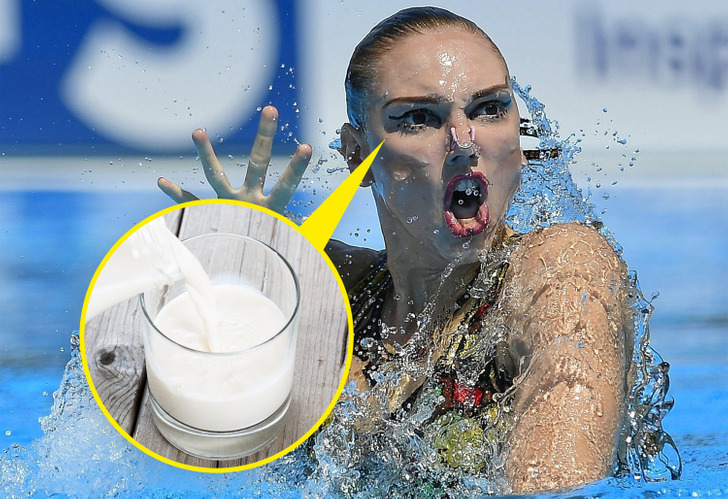
A professional athlete recommended taking milk baths, as this can relieve the eye irritation caused by chlorine. “Fill water glasses with a little milk, put them on, and open your eyes for a few seconds. Repeat a couple of times until you feel relief. If you wear contact lenses, it is recommended that you take them out before trying this technique.”
10. They train to have more flexibility in toes and legs.
For optimal performance in presentations, excellent foot and leg flexion is necessary. To achieve this, swimmers can sit on the floor with their legs stretched out in front of them while trying to touch the floor with their toes.
11. The temperature and transparency of the water in the pool is regulated.
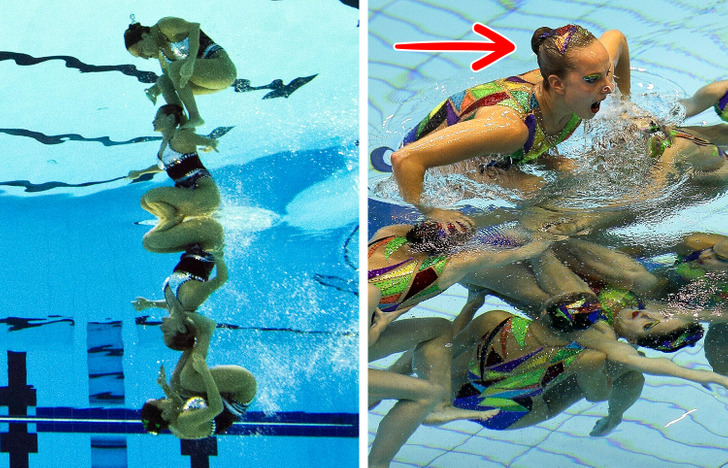
12. They usually swim with spare nose clips
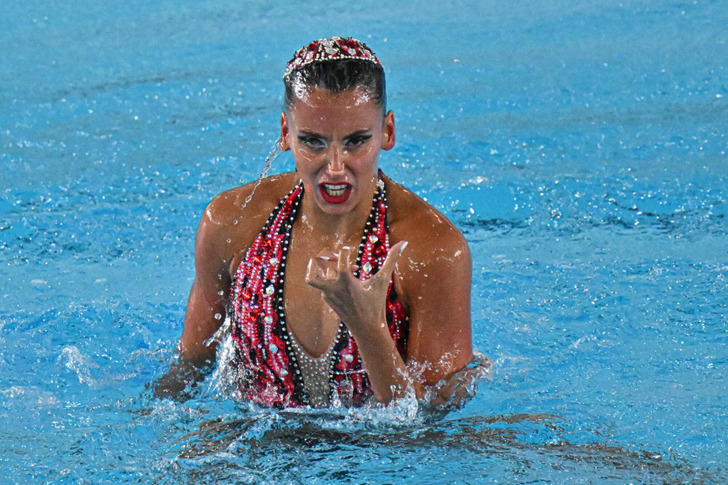
Although the swimmers wear quite small suits during show, their costumes are roomy enough to use them as a storage. Synchronized swimmers always hide spare nose clips in their swimsuits. If it happens that their nose clip is kicked off or knocked off during the performance, the swimmers have to find a moment to pull out the spare one without interrupting the show.
13. They cannot touch the bottom of the pool while competing.
Did you know that artistic swimming was this hard? Have you ever tried anything similar to this sport?
